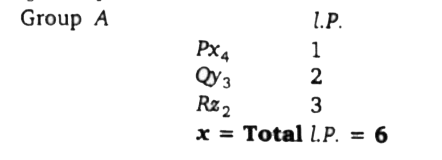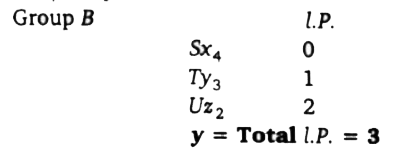Text Solution
Verified by Experts
The correct Answer is:
|
Topper's Solved these Questions
CHEMICAL BONDING (ADVANCED)
VK JAISWAL|Exercise ASSERTION-REASON TYPE QUESTIONS|58 VideosView PlaylistCHEMICAL BONDING (BASIC)
VK JAISWAL|Exercise Level 3 (Passive 11)|6 VideosView Playlist
Similar Questions
Explore conceptually related problems
Knowledge Check
Similar Questions
Explore conceptually related problems
VK JAISWAL-CHEMICAL BONDING (ADVANCED)-SUBJECTIVE PROBLEMS
- There are two groups of compounds A and B. Groups A contains three com...
04:36
|
Playing Now - Consider the following three compounds (i)AX(2n)^(n-), (ii)AX(3n) and...
06:25
|
Play - Condsider the following combination of atomic orbitals : combinding ...
Text Solution
|
Play - Consider the following six changes (i)NO to NO^(+) (ii)O(2)^(-) to ...
12:32
|
Play - When B(2)H(4) is allowed to react with following lewis bases, then how...
Text Solution
|
Play - Consider the following elements A, B, C and D and their outer electron...
Text Solution
|
Play - Consider following four compounds: (i) C(x) O(y) (ii) C(x)O(y+1) ...
04:40
|
Play - Total number of species among following which can use any one t(2g) d-...
Text Solution
|
Play - Calculate expression (x+y+z) for diatomic molecules. where x=Total n...
05:28
|
Play - If Hund rule violate, then find the total number of species among foll...
12:08
|
Play - Consider the following table Than calculate value of experssion...
09:10
|
Play - Total number of species among following, in which bond angle is equal...
04:57
|
Play - Total number of unpaired electrons(s) present in both cationic and an...
04:58
|
Play - Total number of species which has/ have symmetrical electronic distrib...
10:33
|
Play - Total number of molecules, in which each covalent bond is comprised of...
Text Solution
|
Play - Total number of angle in SeCl(4) which are less than 90^(@).
01:19
|
Play - Consider the following species O(Me)(2), N(SiH(3))(3), CO, O(SiH(3))(2...
Text Solution
|
Play - Total number of molecules which can form H-bond among themselves. Si...
03:26
|
Play - Consider two covalent compounds AL(n(1)) and BL(n(2)), if central atom...
07:19
|
Play - Calculate the I-I distance in (Å) for given compound H(2)C(2) I(2) if ...
03:55
|
Play

